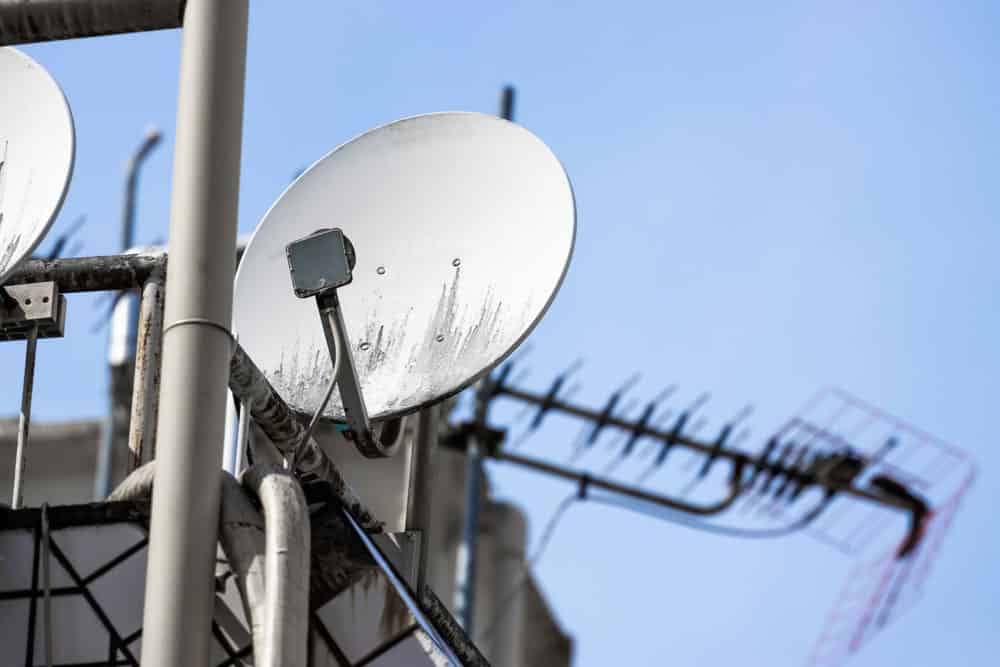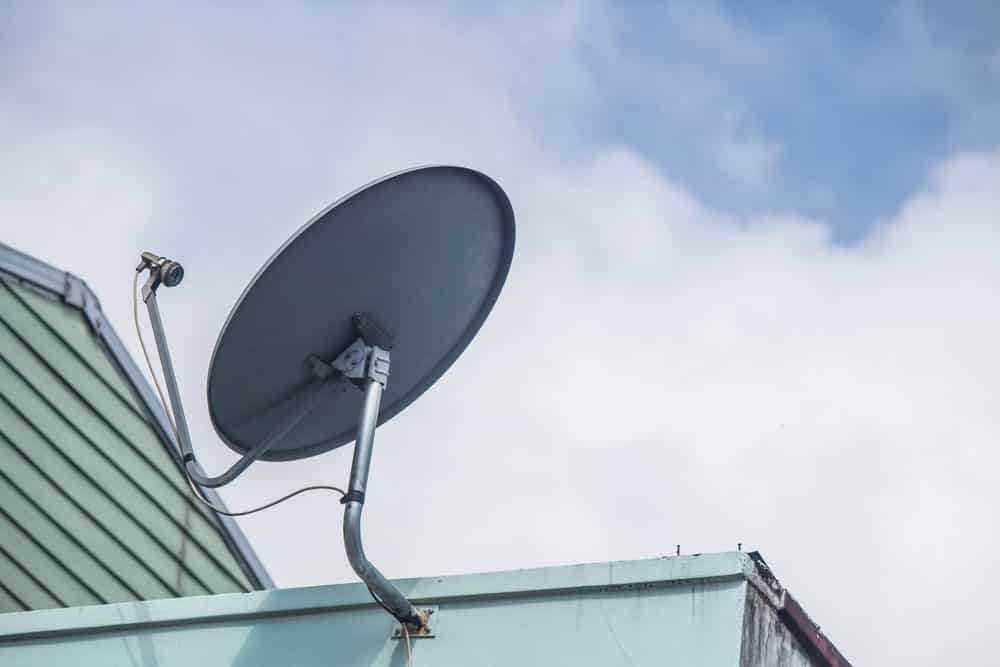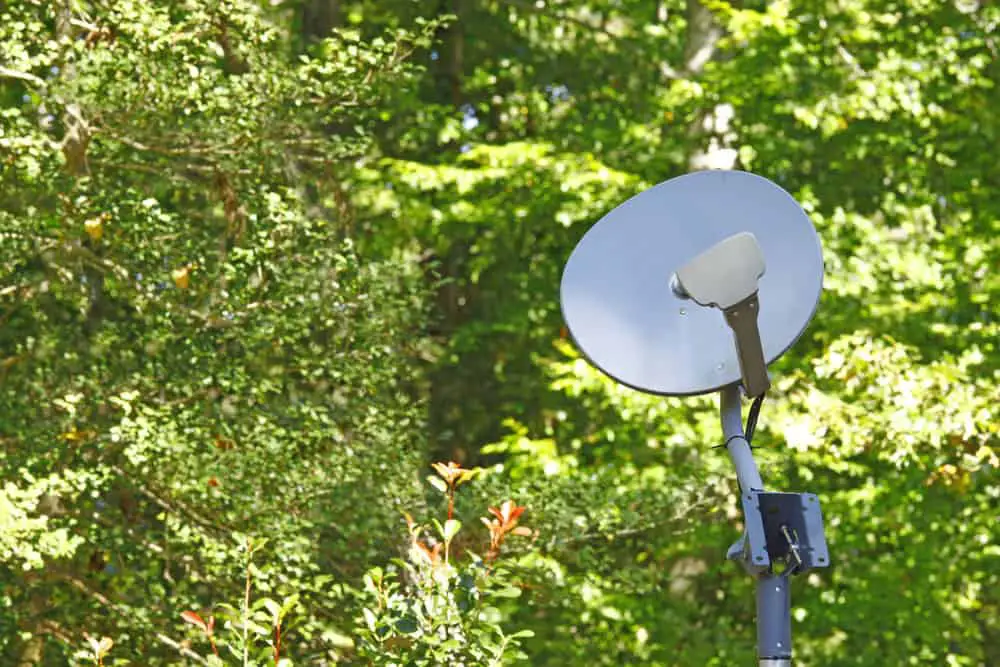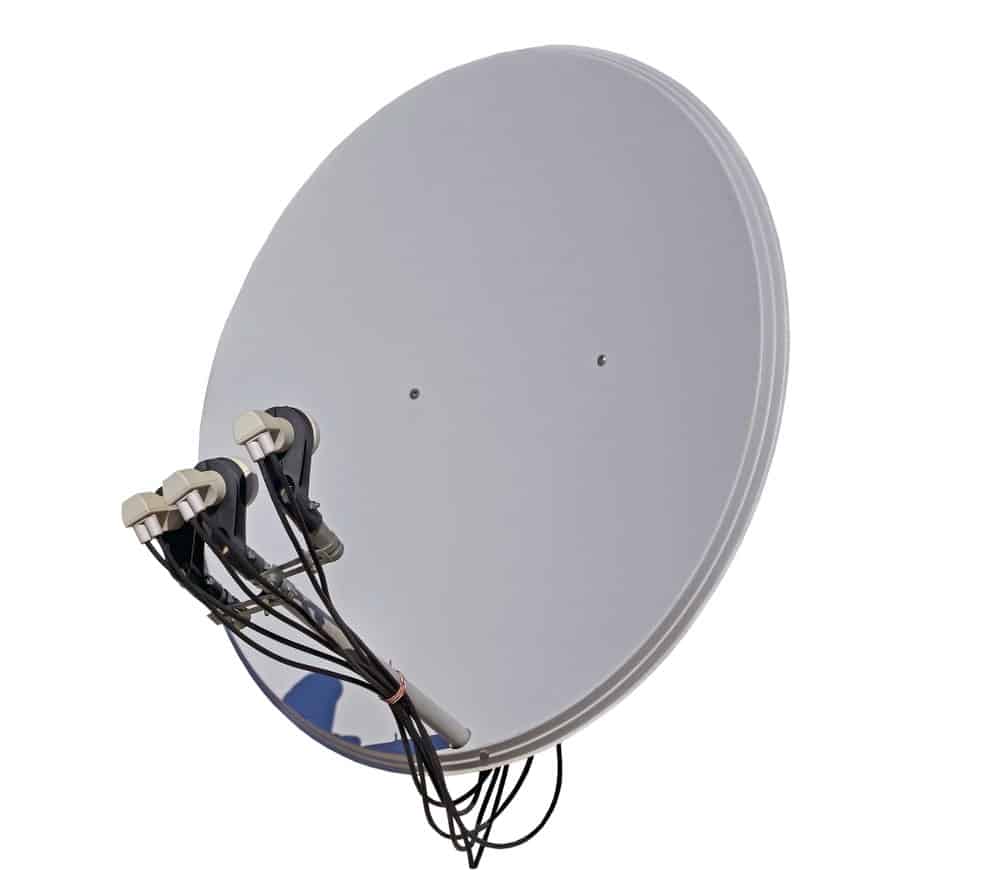About DirecTV Dish Dimensions, Parabolic or dish antennas, have been in use even before the invention of satellite TV. But the satellite TV industry coined the term “satellite dish.” It refers to dish antennas that send and (or) receive radio wave signals from communication broadcasting satellites. However, the first TV dish antennas were massive, measuring nearly 240 inches (20 feet) in diameter.
The size became smaller in the 80s, measuring 120-192 inches (10-16 feet). DirecTV entered the scene in 1994 and has since had multiple dish sizes. We will look at the DirecTV dish dimensions and the bands used for signal transmission. Read on to learn more!
Table of Contents
- Why Dish Antennas Became Smaller Over Time
- DirecTV Dish Types and Dimensions
- What Is an LNB?
- Why Are DirecTV Satellite Dishes Still Large?
- Wrap Up
Why Dish Antennas Became Smaller Over Time
The first TV satellites transmitted low-frequency range C-band analog signals. C-band signals required larger antennas to concentrate the radio waves because the signal strength for these frequencies was relatively low.

An old C-band satellite dish
However, satellite TV companies began transmitting analog signals on the Ku band in the late 80s and early 90s, allowing the use of a smaller 90 cm (35-inch) dish antenna. The band has higher signal strengths in areas with spot beams. So you don’t need large dish sizes to concentrate the powerful signals.

A small Ku-band dish
Modern dish receivers for TV services generally measure 18-31 inches in diameter and get installed in one satellite position for Ku-band reception. Before the advent of direct broadcast satellite services, C-band satellite television dishes had a motorized mechanism to receive channel signals from different satellites.
DirecTV Dish Types and Dimensions
Satellite dish antennas vary in size and number/arrangement of LNBs, depending on the purpose.
18-Inch Round Dish
The first generation DirecTV satellite dish TV antenna was 18 inches in diameter with a single LNB to run a single coaxial cable.
Some had two LNBs for connecting to a single dual-tuner receiver or two-tuner receivers using separate cables. The antenna works with the 101 satellite, a core DirecTV space vehicle in geostationary orbit at the 101° west longitude.

A round satellite dish
DirecTV doesn’t use this antenna for new installations any more, but it is possible to pick up a few signals using the obsolete device. For instance, in some markets, like the larger cities on the North American coast, you can receive local channels using this antenna. However, you can’t get HD programming because it uses a different frequency.
18 x 24-inch Oval Antenna
This DirecTV satellite dish was the original oval-shaped unit the company produced. Like its round predecessor, this dish is no longer in production, and DirecTV doesn’t use it for newer satellite dish installations. However, you can still get many users with this antenna.

An oval satellite dish
The oval dish was the first to support multiple satellites and initially came with two separate LNBs (not two as a single unit). It had a combining device that merged the signals to run them through a single cable to the receiver.
Other variations featured double or triple LNBs, with some having a triple LNB plus a dual LNB sidecar.
18 x 20-Inch Oval Dish
The 18 x 20-inch dish is the most typical hardware in modern DirecTV installations. Depending on the ordered programming, it can have a double, triple, or 5-head LNB.

A satellite dish with three LNBs
The first phase featured two LNBs (with four outputs) to access the 101 and 109 DirecTV satellites. After that, the triple LNB 4-output dish emerged, and it could access the 101, 110, and 119 satellites.
26 x 30-Inch Oval Dish (Slimline)
Five LNB dishes emerged with an oval shape measuring 26 x 30 inches, and they had four outputs with MPEG-4 Ku/Ka. These antennas could receive Ka-band frequencies, so they connected with the new 99 and 103 DirecTV satellites. And they featured advanced MPEG-4 compression technology to deliver HD programming.

A satellite dish with a 5-head LNB setup
The technology was part of DirecTV’s move to provide local HD content to large US cities using an HD satellite receiver. Since it had five LNBs, the other three downconverters received signals from the regular Ku-band satellites 101, 110, and 119 to provide standard-definition content with MPEG-2 compression.
It is possible to add a dual sidecar to the 18 x 20-inch antenna to use the same dish to access two extra satellites.
Specialty Dishes
Hot Shot
Hot Shot is an 18-inch-wide antenna with a built-in heating element. It featured automatic thermal control to melt ice/snow from its surface.
International Dish
As the name suggests, this dish is for providing international programming. It receives satellite TV signals from satellites 95 & 101 and measures 36 x 24 inches. The unit had a single dual or two linear LNBs with two outputs.
Gain Master
Gain Master is also a large dish measuring 35 x 26 inches. It features four outputs and three LNBs (single+dual) for connecting with satellites 101, 110, & 119. The antenna’s selling point was its 65% increase in signal strength compared to the second phase triple LNB 18 x 20-inch dish, which made it more resilient towards rain fade effects. So it was better for areas with high precipitation or those in the boundaries of the satellite coverage footprint.

An oval satellite dish with five LNBs
Slimline 3
The latest generation DirecTV satellite dish is the Slimline 3. These dishes eliminate the need for having five LNB installations because they receive all satellite television signals from three satellites, giving you access to all the TV service’s content. So it is a 3-LNB dish, and do not confuse it with the 5-LNB antenna that also goes by the name Slimline.
DirecTV Sat-Go
We can’t fail to mention DirecTV’s portable receiver that comes as an all-in-one unit with a built-in 17-inch screen. The device does not have a visible LNB, so the receiver integrates this hardware into its design. You only need to face it to the southern sky to get the signals from communications satellites. However, the device requires an external power source, so it isn’t portable.
What Is an LNB?
A Low Noise Block downconverter is a signal receiver placed on the focal point of the dish antenna. Each satellite feed requires a unique LNB. So more LNBs imply more satellite coverage, which means more programming.

An LNB for a satellite TV receiver
Why Are DirecTV Satellite Dishes Still Large?
As new technologies become smaller, DirecTV satellite dishes have become broader.
Why?
DirecTV started with a single satellite that covered a tiny area. However, this satellite wasn’t enough as the company grew and increased its programming. So the company had to look for other locations to launch new satellites into orbit.

Two satellite dishes
DirecTV’s satellite fleet expanded to cover over five primary and two secondary coordinates indicated by their latitudes. The service currently has five satellites: three (99, 101, and 103) for most programming, 101 for Puerto Rico, and 119 for SD channels.
So the antenna has to be wide enough for radio frequency reception from the distributed satellites, then focus them to the three or five LNBs. Additionally, the design helps concentrate and capture more Ka-band frequency signals because they are more sensitive to rain fade.
Wrap Up
In conclusion, DirecTV dish dimensions vary depending on the purpose and generation. Generally, size is not an issue for home installations, but smaller dishes are better for marine and RV users who have space restrictions in their vehicles. So future technologies like more sensitive receivers and powerful amplifiers can lead to the development of 10-inch (or smaller) dishes. Drop a comment below to share your sentiments about DirecTV dish sizes and if you would like tinier antennas.
